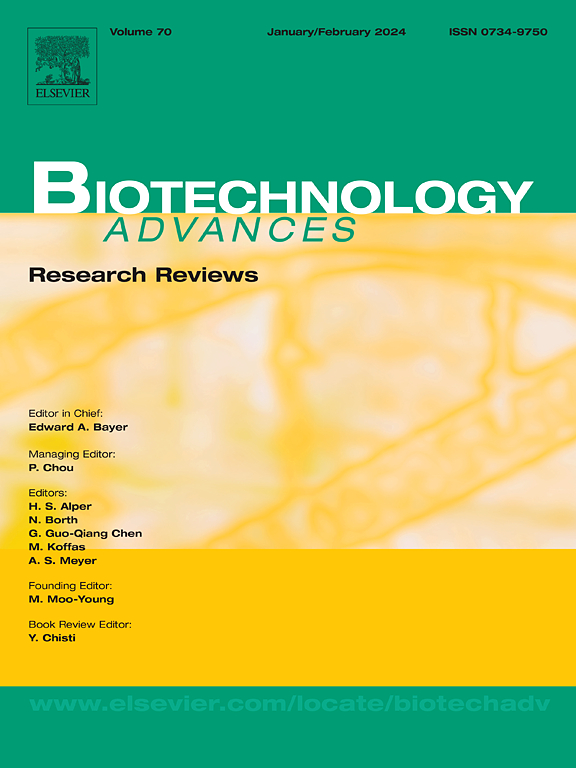Fungal ergot alkaloids: Metabolic pathways, biological functions, and advances in synthetic reprogramming
IF 12.1
1区 工程技术
Q1 BIOTECHNOLOGY & APPLIED MICROBIOLOGY
引用次数: 0
Abstract
Ergot alkaloids (EAs) are a class of secondary metabolites produced by fungi. These compounds are predominantly synthesized by Ascomycota, with variations in types and biosynthetic pathways among different fungal species. The EA synthesis has minimal impact on the normal growth and development of most EA-producing fungi, but serves as a virulence factor that influences the biocontrol functions of entomopathogenic fungi and symbiotic fungi in plants. In the medical field, EAs have been widely used for treating neurological disorders such as Parkinson's disease. However, the biosynthetic pathways of EAs are highly complex and significantly influenced by environmental factors, resulting in low yields from field production or chemical synthesis. To address the global demand for EAs, various strategies have been developed to reprogram the biosynthetic pathways in some chassis strains, aiming to simplify the process and increase EA production. This review summarizes the biosynthetic pathways and regulatory mechanisms of EAs in fungi, their biological functions, and recent advances in strategies for synthetic reprogramming.
真菌麦角生物碱:代谢途径、生物学功能和合成重编程的进展
麦角生物碱是真菌产生的一类次生代谢产物。这些化合物主要由子囊菌合成,在不同的真菌种类中有不同的类型和生物合成途径。EA合成对大多数产EA真菌的正常生长发育影响很小,但作为毒力因子影响植物中昆虫病原真菌和共生真菌的生物防治功能。在医学领域,ea已被广泛用于治疗神经系统疾病,如帕金森病。然而,ea的生物合成途径非常复杂,受环境因素的影响很大,导致田间生产或化学合成的产量很低。为了满足全球对EA的需求,已经开发了各种策略来重新编程一些底盘菌株的生物合成途径,旨在简化过程并增加EA的产量。本文综述了ea在真菌中的生物合成途径和调控机制、它们的生物学功能以及合成重编程策略的最新进展。
本文章由计算机程序翻译,如有差异,请以英文原文为准。
求助全文
约1分钟内获得全文
求助全文
来源期刊

Biotechnology advances
工程技术-生物工程与应用微生物
CiteScore
25.50
自引率
2.50%
发文量
167
审稿时长
37 days
期刊介绍:
Biotechnology Advances is a comprehensive review journal that covers all aspects of the multidisciplinary field of biotechnology. The journal focuses on biotechnology principles and their applications in various industries, agriculture, medicine, environmental concerns, and regulatory issues. It publishes authoritative articles that highlight current developments and future trends in the field of biotechnology. The journal invites submissions of manuscripts that are relevant and appropriate. It targets a wide audience, including scientists, engineers, students, instructors, researchers, practitioners, managers, governments, and other stakeholders in the field. Additionally, special issues are published based on selected presentations from recent relevant conferences in collaboration with the organizations hosting those conferences.
 求助内容:
求助内容: 应助结果提醒方式:
应助结果提醒方式:


